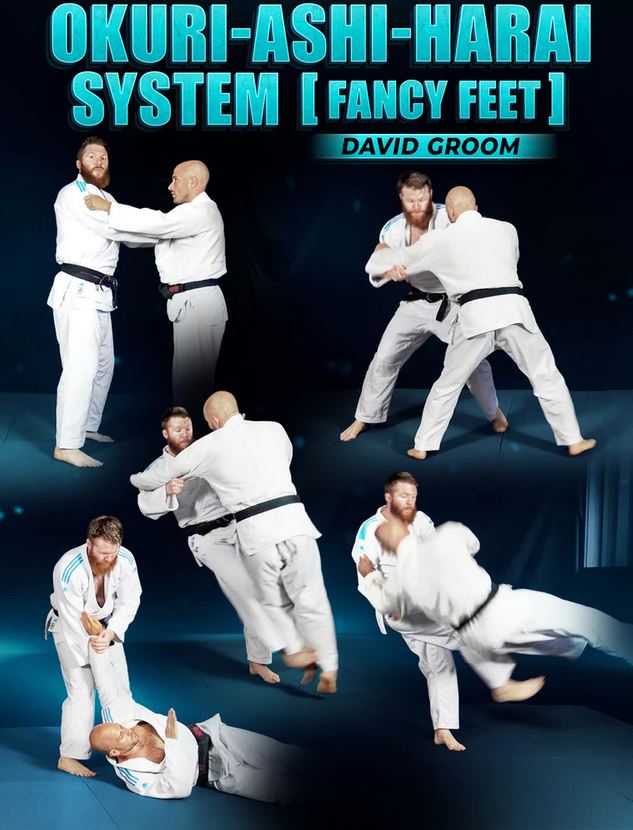If you’re reading this, you’re probably of an advanced age and your body reminds you of it every session. If my demographic wizardry is correct, you’ve probably picked up Judo at a later stage in life rather than having trained in it throughout your years. You’re probably seeing a lot of technique being “muscled through” and you wonder if this is really what you signed up for?
Power vs Technical Proficiency
The elite-level Judo these days (the 2020s) is very power focused. Go to the IJF website and have a look at the matches from the Judo elites of today and you’ll notice the absence of flashy combos prevalent in the past. There’s a lot more powering on and pushing a single throw through; the technical proficiency is certainly there but it’s secondary to power.
In his tenure as the Japan head coach around 2013 or so, Kosei Inoue broke with tradition and incorporated strength training and free weights to the regiment of Japanese Judo elite-level training. This is significant since Japan has a massive influence on the Judo community generally.
I myself notice this with the younger players I go up against at our club nights, particularly ones that have trained with more heavy-weight coaches. They seem to favour soldiering on with their favoured throw (typically Ippon Seoi Nage) rather than complex setups and fancy combinations.
I’m well beyond the twilight of my athleticism and given my resources aren’t limitless I look to strike a balance in my recreational training that delivers the most paydirt. Some strength training is certainly sensible and beneficial to get a modicum of power and injury prevention. However the greater benefit and enjoyment I get is from technical training. This is where Ashiwaza comes in: it’s possibly the most technical you can get in this combat sport.
What the hell is Ashiwaza?
To the uninitiated it’s ‘foot sweeps’ or ‘judo trips’ but this definition misses the point because the action is whole-body, not with the foot.
Why is it the best thing since sliced bread?
The general principles of Judo are inherent in it: if you get good at Ashiwaza, you’re doing Judo properly, how it’s meant to be performed. It’s a working demonstration for the essence of what Judo is: minimal effort, maximal efficiency.
How beautiful it is when you get the timing right; it really does feel like magic. You’re essentially capitalising on your opponent’s movement in such a way that they are flung into the air with minimal effort from your side.
Another additional benefit is that if it doesn’t work you can get your opponent into a great position for a follow-on attack.
Then there’s the fact that you can use it as a counter to their initial engagement, since depending on the technique used you can expend minimal force to execute it.
There are plenty of techniques that fall into the ashiwaza area, and some involve power more than others, however given there’s a strong emphasis on feel and timing you can get good regardless of your age.
Finally, it’s very useful as a cross-over technique in BJJ. Why? Because there’s usually no giving your back away (which is highly rewarded in all BJJ competition rulesets).
How does one practice and execute Ashiwaza?
You can’t practice on a casual, well-meaning family member or friend; it requires an experienced judoka who can give the right queues and realistic reactions. Someone who isn’t afraid to fall. You essentially want someone who’s been practicising (and falling) for a good couple of years at least so they can work with you and give some natural responses.

Short of going to an actual seminar dedicated to Ashiwaza (and here in the UK they seem few and far between) the next step is to go online. I’ve seen a few instructionals from Judofanatics.com (please note the referral link, you get a discount by following it and making a purchase) on Ashiwaza and can highly recommend them. One thing that really struck me was a quote from David Groom in his video “Okuri Ashi Barai system” where he said “We’re allowing our opponent to be light. The more movement they have the easier it becomes.” This is quite a fundamental concept here – particularly when I reflect on those times where I’ve kicked and reaped away at a foot that’s firmly planted to the mat. Doh!
On the subject of Judofanatics.com I can highly recommend these three Ashiwaza videos I’ve seen:
- Okuri-Ashi-Harai system by David Groom.
It’s in need of an edit at times, but the demonstrations and explanations I’ve found quite superb. Groom has created a very methodical system and it’s really helped my game. - Demystifying Ashi-Waza by Shintaro Higashi.
This instructional has a smaller running time but provides a good introduction to movement. He provides some great ideas for combinations too. - American Judo System | The Ashi Waza Encyclopedia by Travis Stevens
If you go for one instructional for ashi waza, this is it. It’s very comprehensive and goes into fantastic detail about “the how” coupled with typical problems people face in practice.
In Conclusion
I hope I’ve convinced you of the benefits of ashiwaza. There is a certain joy that comes with fluency. The eventual throw that comes out of it is usually so quick that your uke will not know what happened. It really is a thing of beauty.
In Judo you can never stop learning. There’s always a mini-project you can dedicate yourself to for a period of time, regardless of your rank. There’s a huge sphere to get yourself immersed in, and ashiwaza is a great place to dedicate time to.
The first thing you’re shown with ashiwaza is how to practice on your own, sweeping a leg from side to side. A deceptively trivial movement which forms the foundation of ashiwaza movement. Look this up and try that now.. your ashiwaza journey begins!